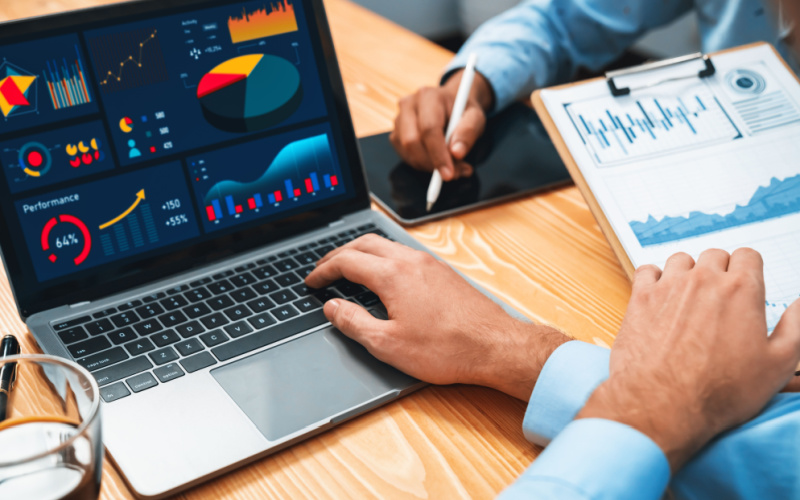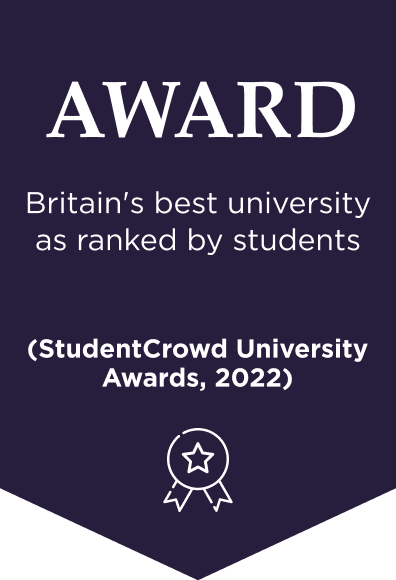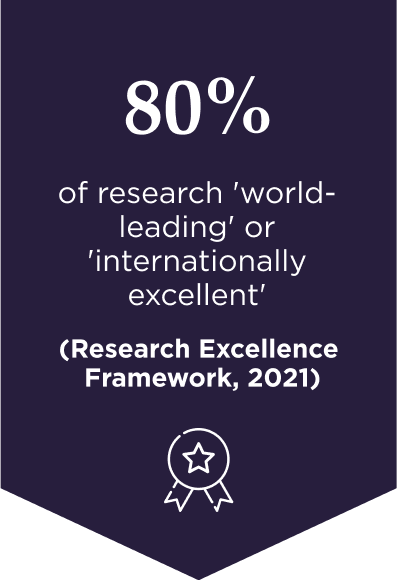Data visualisation: giving data greater meaning
Posted on: August 11, 2023by Ruth Brooks

Presenting raw data often isn’t the best way to articulate ideas, trace patterns and convey meaning. While they may be accurate, when viewed in isolation, numbers and figures don’t tell much of a story – or, if they do, certainly not always an engaging one.
We all engage with visual representations of numbers and data in our everyday lives; from the real-time dashboard of our fitness devices, to maps depicting Covid outbreaks and case numbers. As users, the output we tend to receive is highly organised, strictly relevant and aesthetically pleasing for our human brains, distinctly separate from the scale, complexity and chaos that is big data in its raw form.
With large data sets, multiple data points and diverse data sources all part and parcel of daily business decision-making – and the need to convey their findings to audiences paramount – it’s easy to understand the importance of data visualisation.
What is data visualisation?
Using data, and encouraging data-driven decision-making, is of critical importance.
Data visualisation – also referred to as dataviz – is the graphical representation of data through bar graphs, charts, infographics, diagrams, area charts, line graphs, histograms, treemaps, animations and many other tools. It offers a way to display and communicate the often-complex relationships and correlations existing within data sets.
Effective data visualisation is not solely the reserve of data analysts and data scientists. In fact, it’s commonly used in a variety of settings and for any number of purposes – from business users like a manager keen to illustrate diverse revenue streams, to a doctor translating complicated medical statistics into a more digestible format. Through its use, data of all types is made accessible, depicted in easy-to-understand ways for all manner of audiences.
Visualisation techniques are used widely across a variety of industries. For example:
- software
- data science and analytics
- finance and fintech
- business intelligence
- healthcare
- retail
- media and news
- edtech
- legaltech
- govtech.
Popular examples of data visualisation tools include: Visme, Tableau, Infogram, Datapine, Whatagraph, DataBox, ChartBlocks, DataWrapper, Python – via its data visualisation modules, Excel and GoogleCharts.
What are the other benefits of data visualisation?
Perhaps the most important benefit of data visualisation is that it allows us to gain actionable insights from data – which, in turn, supports us in making better decisions. For example, website traffic data organised into pie charts, heat maps, bar charts and click maps can help business owners understand the behaviour of their customers in greater depth. They can examine which products receive the most engagement, which pages aren’t performing, the keywords used in search engines, and so on. From this informed stance, decisions can be made around further investment, campaigns, audience segmentation, digital marketing strategies and developing future key performance indicators (KPIs).
To gauge the full importance of data visualisation, leaders need look no further than the further benefits it provides. These commonly include:
- communicating complex data more easily to stakeholders
- depicting trends, metrics and patterns in clearer, more concise ways
- enabling contextualisation of data
- gaining a better understanding of data overall, including spotting outliers and anomalies
- identifying correlations between operations and results
- supporting decision-makers in their understanding of business data.
What are the four purposes of data visualisation?
While data visualisation as a whole is critical to communicating aspects of our everyday lives, it can also be used for other purposes.
The Harvard Business Review breaks data visualisation into four key areas:
- Idea illustration – clarifying complex ideas by translating data into metaphors and design conventions that we understand, such as trees, bridges, circles and hierarchies. It relies on concise and simple design, built on logic, clear communication and structure.
- Idea generation – less formal activity and commonly used in ‘mind-mapping’, strategy and innovation sessions to conceptualise thoughts and capture ideas as they arise. Creative thinking and collaboration matter more here than design.
- Visual discovery – data is divided into either visual confirmation (testing hypotheses) or visual exploration (mining for trends and patterns). Simple visuals, software tools and statistical modelling are useful, as well as more unusual forms of visualisations such as force-directed diagrams.
- Everyday dataviz – includes the more simplistic, daily forms of visualisation we produce – think pie charts, line charts, scatter plots and the like.
Whichever purpose and approach best suits the needs of a given exercise, data visualisation is not data analysis. While they often work in combination to draw conclusions about datasets, analytics focuses on making decisions about what the information shows us and acts as an input source for visualisation.
Best practices in data visualisation
For data-driven businesses to get the most out of their visualisation efforts, it pays to think about how to think about presenting information in the most appealing and engaging ways.
This includes:
- defining the purpose of visuals to ensure they meet the unique needs of specific audiences and provide real, actionable value
- thinking about the questions the data needs to answer or the problems that require solutions
- ensuring the data is clean by removing corrupted, badly formatted, duplicate, incorrect and incomplete data
- identifying the best types of data visualisation to present the information in a way that audiences can access and digest quickly and easily.
What’s next for data visualisation?
Visual approaches to data are only growing in popularity, but are facilitating communication and supporting understanding in both our personal and professional lives. Such widespread use is likely to require greater standardisations within data visualisation, including socially recognisable symbols and systems.
Virtual and augmented reality enables users to interact with data in immersive ways. It uses data storytelling, personalisation within data visualisation, and greater use of both artificial intelligence and machine learning algorithms to maximise pattern and trend recognition – features which are likely to grow as the field expands.
Capitalise on the benefits of data visualisation in your business practice
Is data visualisation important for communicating information in your role?
Prepare for senior leadership and management positions – and learn how to harness business data to your advantage – with Keele University’s online MSc Management with Data Analytics programme.
Learn to manage the operational and strategic challenges of running an organisation, on a flexible course where theory is backed up with real-world context and application. As well as the social, global and environmental challenges of business leadership, you’ll explore topics such as financial management, sustainable supply chains, people management, data analytics and databases, strategic marketing, and more.



